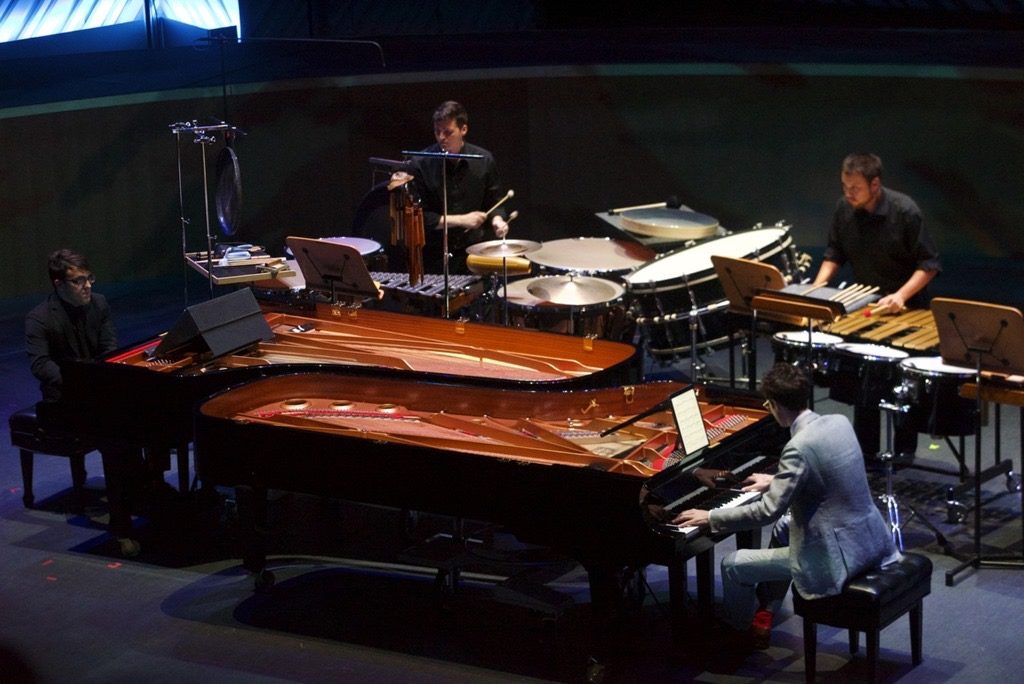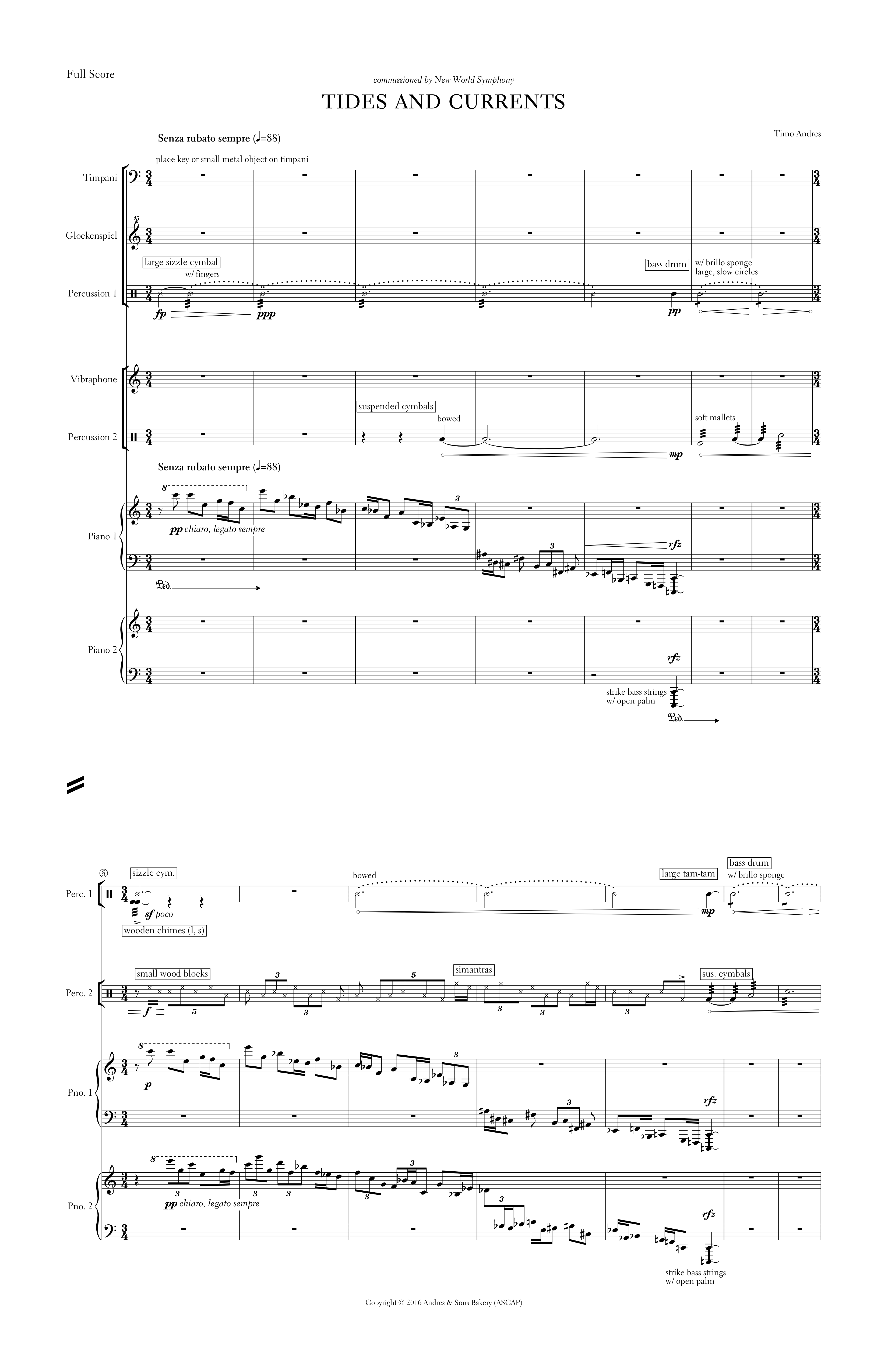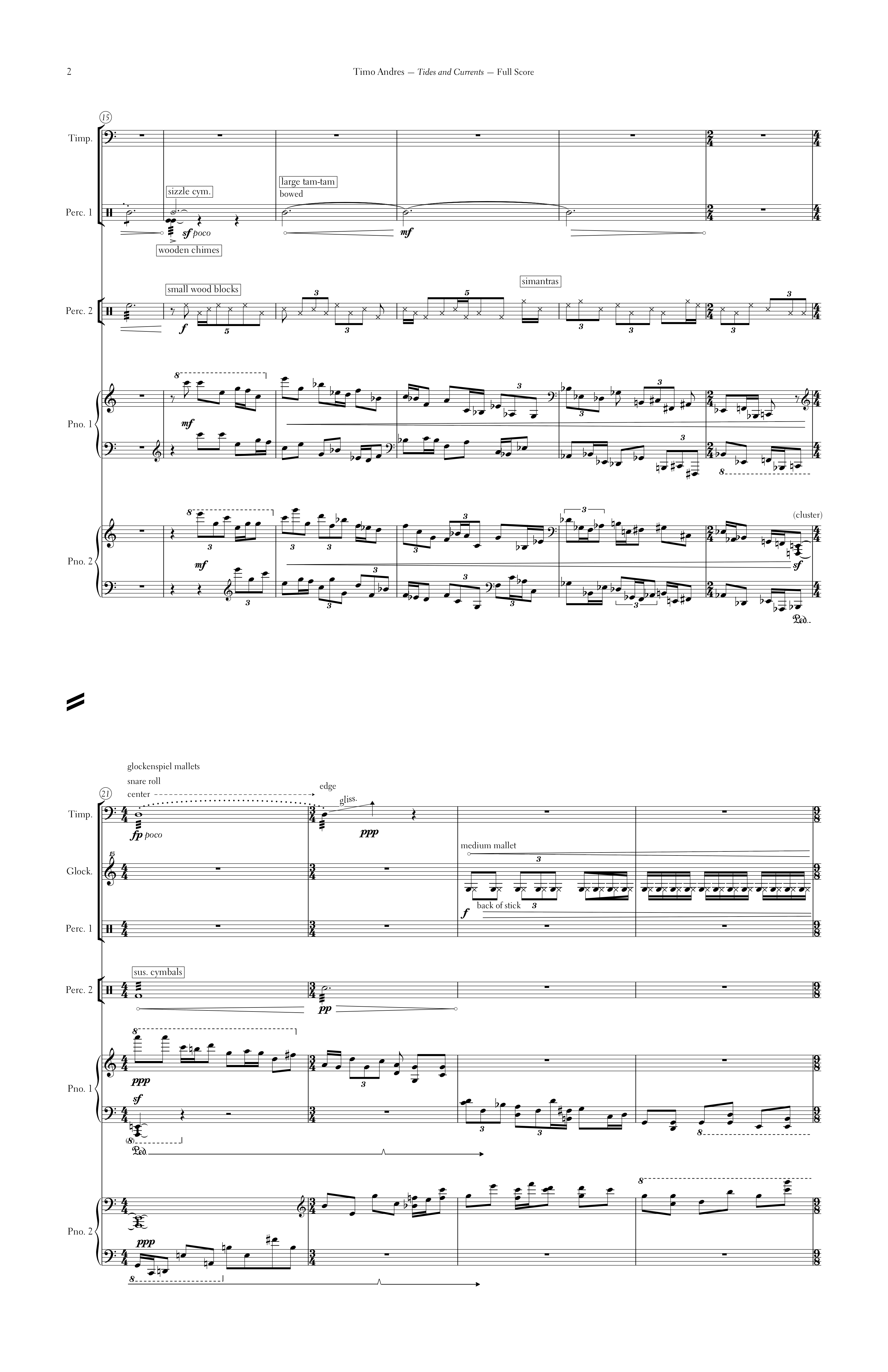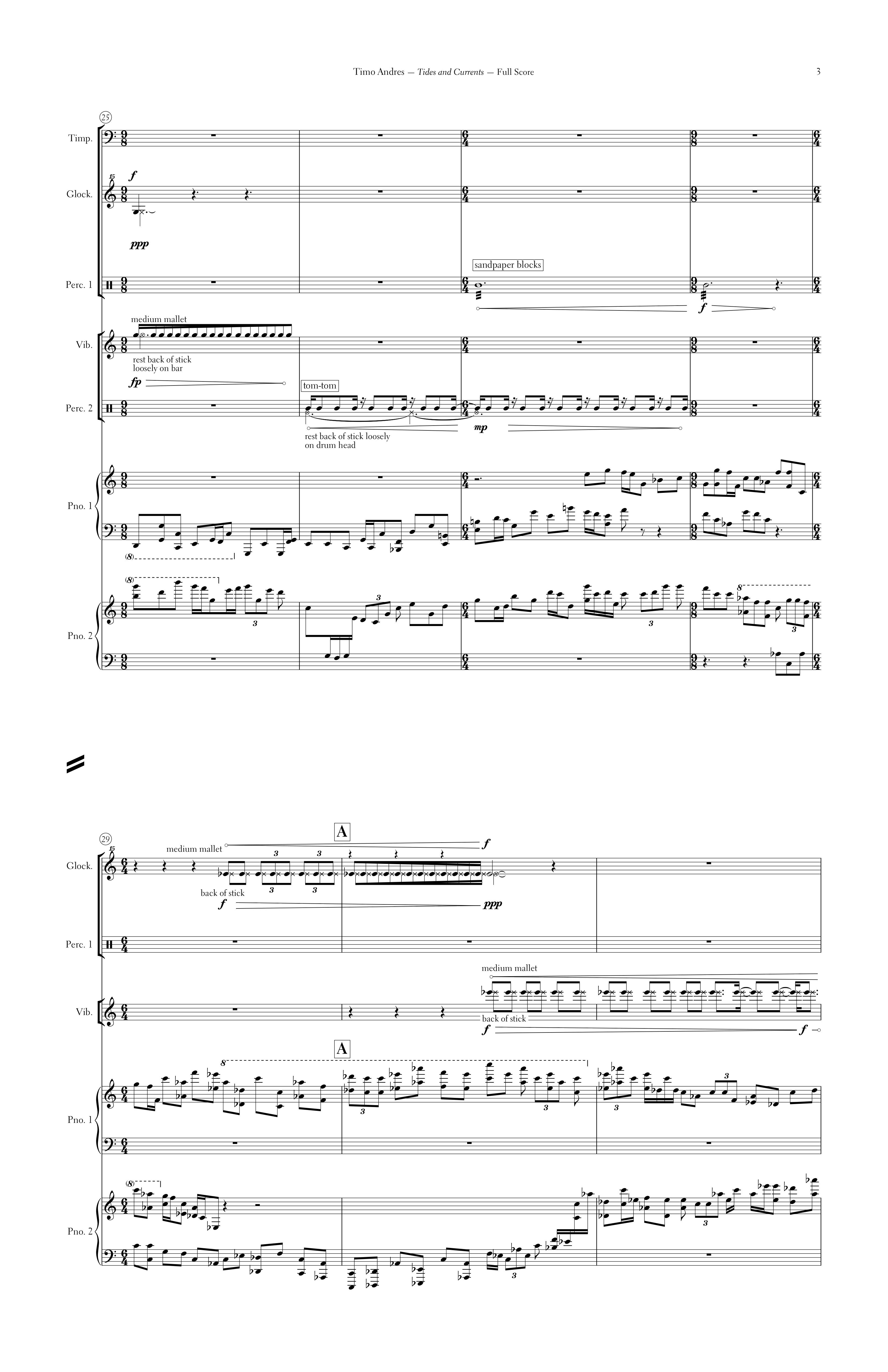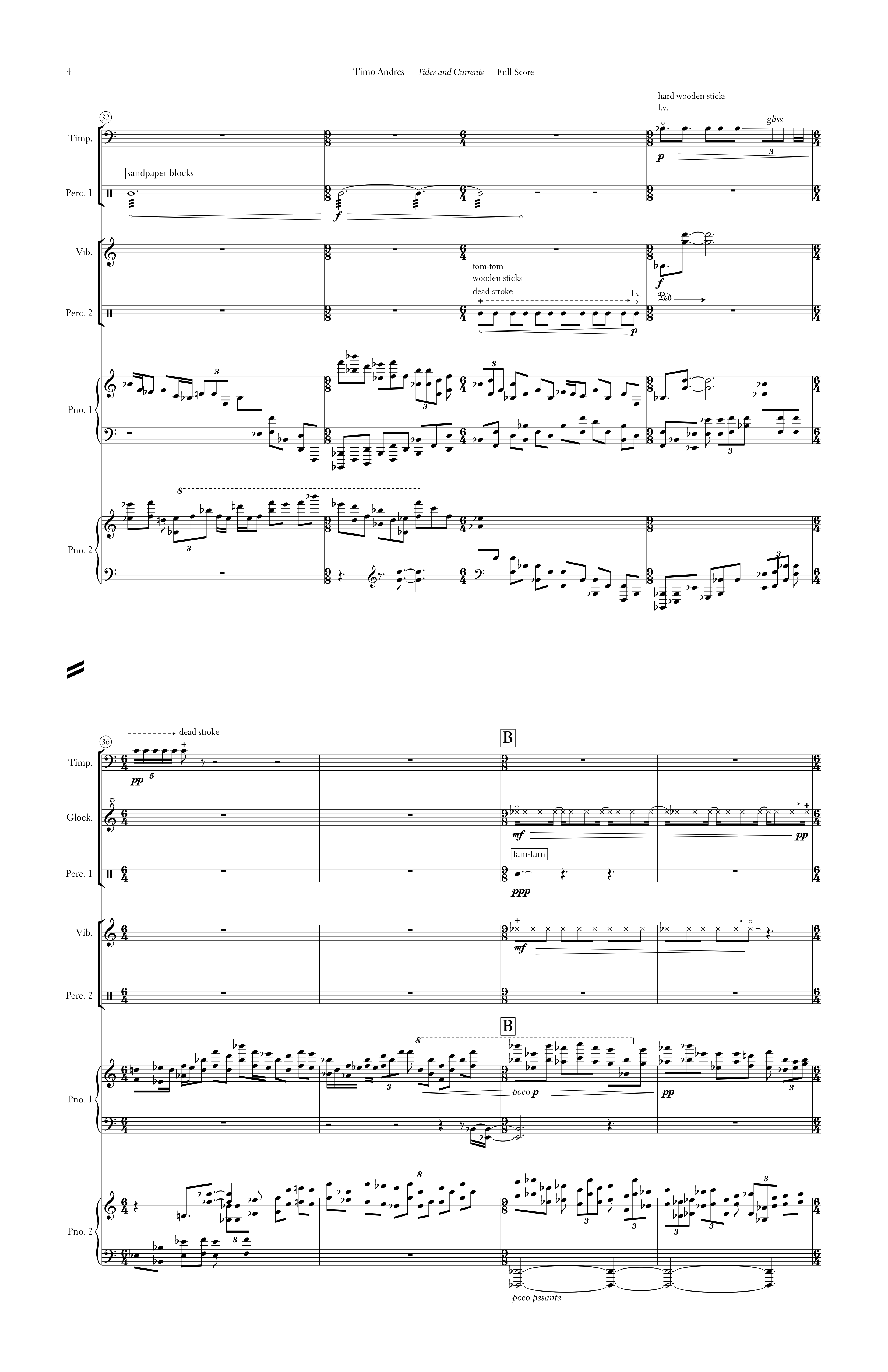Note
I don’t think explaining one’s writing process usually does much to illuminate the resulting work, but in the case of Tides and Currents, which formed from structured improvisation, this process represents a marked difference from the way I’ve written all of my other music to date. I’m not much of an improviser, either in performance or as part of the composing process. However, I think improvisation can sometimes achieve a more natural sense of progression and development over a stretch of time than my usual, painstaking note-by-note routine. That’s why I used it as a starting point for Tides and Currents, in which I wanted to give large reverberant instruments a sense of geological change over a relatively short timespan.
Improvisation was only the first step, though. After I’d recorded several layers of prepared piano—hilly figures churning through the circle of fifths—I overlaid them at different periodicities, so their peaks and valleys would clash unpredictably. Then I “quantized” or aligned them to a regular rhythmic grid. The resulting material, organized into a long crescendo, became the first half of the piece. The second half takes cellular matter from the first and zooms in, revealing a gentler play of interlocking canons.
Once I’d drafted the piano parts, their constant ascent-descent looked like waves in the score, which suggested the back-and-forth exchange of “wet” (reverberant) to “dry” (short) sounds in the percussion parts.
Listen
Timo Andres: Tides and Currents
recorded live at New World Center, Miami, Fl
performers Stephen Kehner and Matthew Howard, percussion; John Wilson and Timo Andres, pianos
Purchase
-
Tides and Currents score & parts, print edition
-
Tides and Currents score & parts, PDF edition
36 pages, 11×17 format. Includes full score and 4 parts.
